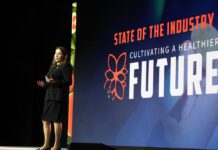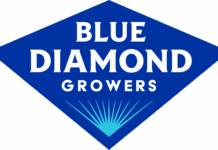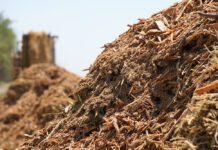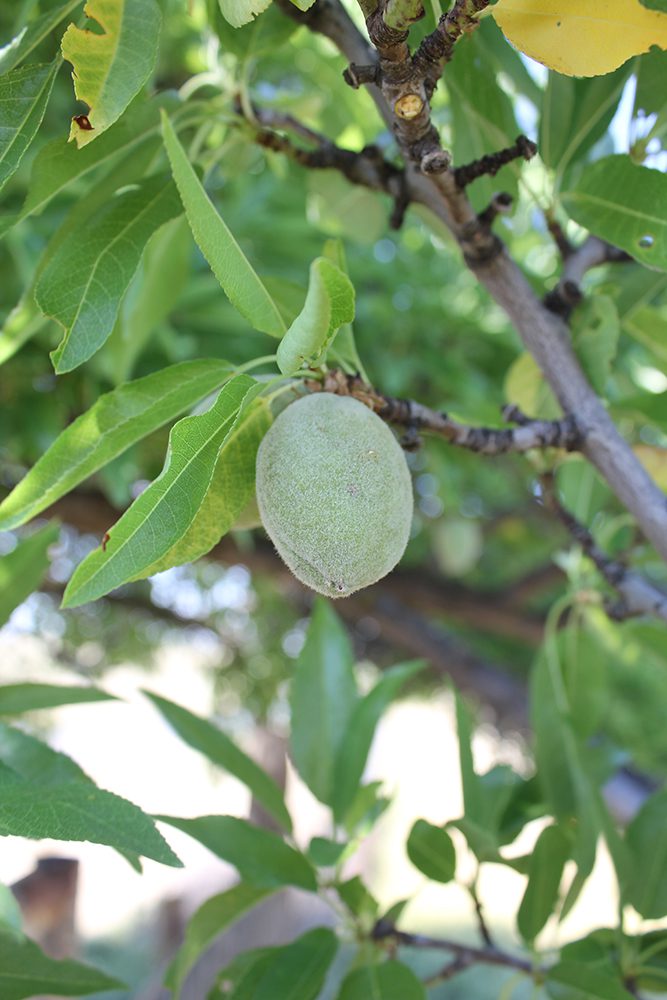
By now, most growers, farm managers and crop consultants have walked their orchards and decided more or less what size almond crop their trees are bearing. However they arrived at their particular number, and what management decisions they will make with that information, can have a bearing on their profit margin.
While the almond industry and individual processors use grower and orchard surveys for crop forecasting to make marketing and logistics decisions, growers can help themselves manage inputs when they have a good idea of the size of the crop on their trees.
You have got to walk the orchard and have the ability to read the trees,” Blue Diamond Vice President of Grower Relations Mel Machado said.
Surveying almond orchards in mid-April, Machado said he saw good and not-so-good yields in individual orchards.
Sebastian Saa, Almond Board of California’s associate director of research, said there are several opportunities during the growing season to make crop size estimates. A highly accurate estimation of crop size is unlikely to be made early, but Saa said the starting place is to estimate the yield potential. That can be done by adding known orchard factors, including tree age, variety and, if trees have produced a previous crop, crop size. Environmental factors at bloom and later could also impact yield potential.
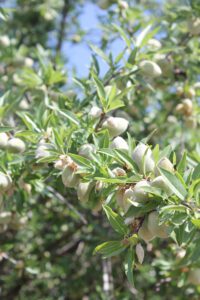
“You know that a fourth-leaf orchard is unlikely to potentially produce more than a 2,000-pound crop while a fifth or older orchard may, depending on tree size and variety,” Saa said. He noted studies have shown a high correlation between canopy size and yield. Mature trees that capture 85% light can have a much higher yield than trees capturing only 50% sunlight.
It is difficult to make an accurate estimation early in the season prior to 70% leaf out when the first fertilizer application is made, but that is the starting point with a potential yield, Saa said. As the season progresses and crop size becomes more apparent (or not), depending on other factors, crop size estimation continues. Growers must take into account late frosts, rain, disease and fruit drop in June as these can affect yield potential.
“It is subjective, a visual thing,” Machado said. “You have to use orchard yield history to keep it in perspective, to see the capability of the block.”
Use Yield from Last Year
Integral Ag founder and crop advisor Justin Nay said at some basic level, almond growers are always trying to make a crop estimate, and some are better with their estimates than others.
“They are likely in the range of 10% to 20% plus or minus,” Nay said. “They usually use their yield from last year and say it looks better or worse, or the same.”
Nay uses the word “guesstimate” because he is not counting nuts on the tree, just adjusting an estimate as the nuts size and the crop thin.
However a crop yield is estimated, Nay said the number is used for everything from nitrogen budgeting, fertilizers and amendments as well as planning insecticide treatments and working with the grower to figure out the crop value. In an IPM program, the economic injury level requires “at least a stab” at the value of the crop, Nay added.
Almond grower Christine Gemperle agreed with using last year’s yield and deciding if this year’s crop looks heavier or lighter and by how much. She lines that up with last year’s fertilizer use to develop a nutrition strategy. Also, she said it is important to keep in mind the following year’s crop and not cut back on fertilizers and water at critical bud development stages.
A sound number will come into sight as trees begin to look heavy (or light). That is the time to fine-tune the nutrition plan, Saa said. Growers can cut back with a light crop and save costs. It can be a balancing act, Saa noted, because the first fertilizer application was done with only the potential in mind. The in-season adjustment is based on what a grower sees on the trees.
There won’t be a perfect estimation early, but in using orchard production records, variety and effects of weather, a closer number can be determined. How many pounds expected at harvest is what drives the total amount of N to be applied. Productivity cannot be improved by adding more N than the trees can use. Since growers are required to have nutrient management plans to protect groundwater quality, estimation can help. Overapplication of N can also lead to excessive input costs, hull rot and groundwater contamination.
“In low price years, it is important to be as accurate as possible with yield estimation,” Saa said. “That way you can make little adjustments as needed.
Technology in the Future
Technology may play a part in crop estimation in the future. Work is being done to develop models using data inputs for early yield prediction in collaboration with UC Davis via research supported by the Almond Board of California, but while the technology is evolving, there is not yet an efficient method for growers to use for predictions.
Research published by UC Davis researchers used aerial imagery and deep learning for early almond yield forecasting. The study looked at bloom intensity to predict crop load at the tree level from aerial images. Alireza Pourezza, instructor in the Dept. of Biological and Agricultural Engineering and the Digital Agriculture Lab, leads research and extension education in digital agriculture, remote sensing, precision agriculture and mechanization.
In the research, no consistent relationship between bloom density and crop load was found over the years for any of the cultivars in the study. In addition, low-resolution images from the satellite imagery did not work to predict bloom density. The study did emphasize the need for continued research to better understand the complex relationship between bloom density and yield.
Pourezza noted overall, the study highlighted the potential of using deep learning models to predict bloom density. He added future research will be needed to measure the impact of the external features on crop load and yield and establish a more generalizable relationship between bloom density and yield that can be transferred to another date and geographical location.

Cecilia Parsons | Associate Editor
Cecilia Parsons has lived in the Central Valley community of Ducor since 1976, covering agriculture for numerous agricultural publications over the years. She has found and nurtured many wonderful and helpful contacts in the ag community, including the UCCE advisors, allowing for news coverage that focuses on the basics of food production.
She is always on the search for new ag topics that can help growers and processors in the San Joaquin Valley improve their bottom line.
In her free time, Cecilia rides her horse, Holly in ranch versatility shows and raises registered Shetland sheep which she exhibits at county and state fairs during the summer.







